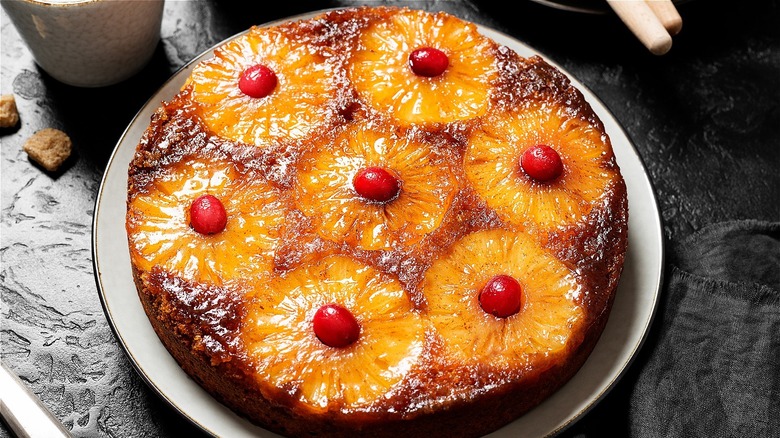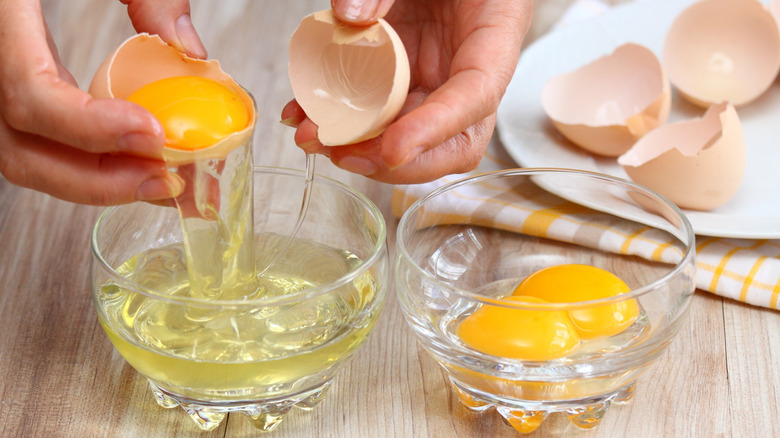The Egg Tip To Remember For Fluffier Pineapple Upside-Down Cakes
Many consider a slice of gooey pineapple upside-down cake a comfort food alongside other homemade goodies like chocolate chip cookies. There is something about the light, simple cake topped with pineapple rings, caramel, and maybe even a few bright-red Maraschino cherries. Bakers may use family recipes or even create their own glow-ups.
Like a lot of folk arts, the origin of the pineapple upside-down cake is a mystery. However, James Dole is credited with inventing the technology to peel, core, and commercially can pineapple around 1913, per Brittanica. Canning pineapples made them more accessible to bakers outside the climate where they grow. No one knows exactly who made the first pineapple upside-down cake, but it was probably between 1913 and 1924.
In 1925, the Hawaiian Pineapple Company (now Dole) advertised a contest for creative pineapple recipes. Up to 100 winners would have their recipes included in a cookbook titled "Pineapple As 100 Good Cooks Serve It" and win a $50 prize. Of the 60,000 recipes entered, 2,500 were for variations of pineapple upside-down cake. A recipe created by "Mrs. Robert Davis" of Norfork, Virginia was among the winners (per Scrantonian Tribune). The popularity exploded from there as the cake became trendy.
Pineapple upside-down cake is easy to make since it is so forgiving and versatile. Modern bakers can adapt it to their taste. If you want a lighter, fluffier version of the modern classic, try this surprising egg hack.
The egg makes the cake
For a fluffier pineapple upside-down cake, MasterClass recommends just using egg whites instead of the whole egg. Many airy, light cakes use whipped egg whites, including angel food cake (per The Washington Post). The part of the egg and technique used when baking can transform the texture, structure, and even flavor according to Happy Egg Co. Egg whites are pure protein without the fats to weigh them down. When whipped, they can form airy but surprisingly strong structures (think of meringue-based desserts). Happy Egg Co. also points out that combining egg whites with acidic ingredients like lemon juice or pineapple juice forms an extra-sturdy structure in baked goods.
MasterClass offers an additional tip to take the fluff up a notch. They remind bakers that using cake flour instead of all-purpose flour produces a "softer crumb" for a lighter texture. If you are interested in trying these cake hacks, feel free to start with our easy pineapple upside-down cake recipe but substitute cake flour and use just egg whites.

